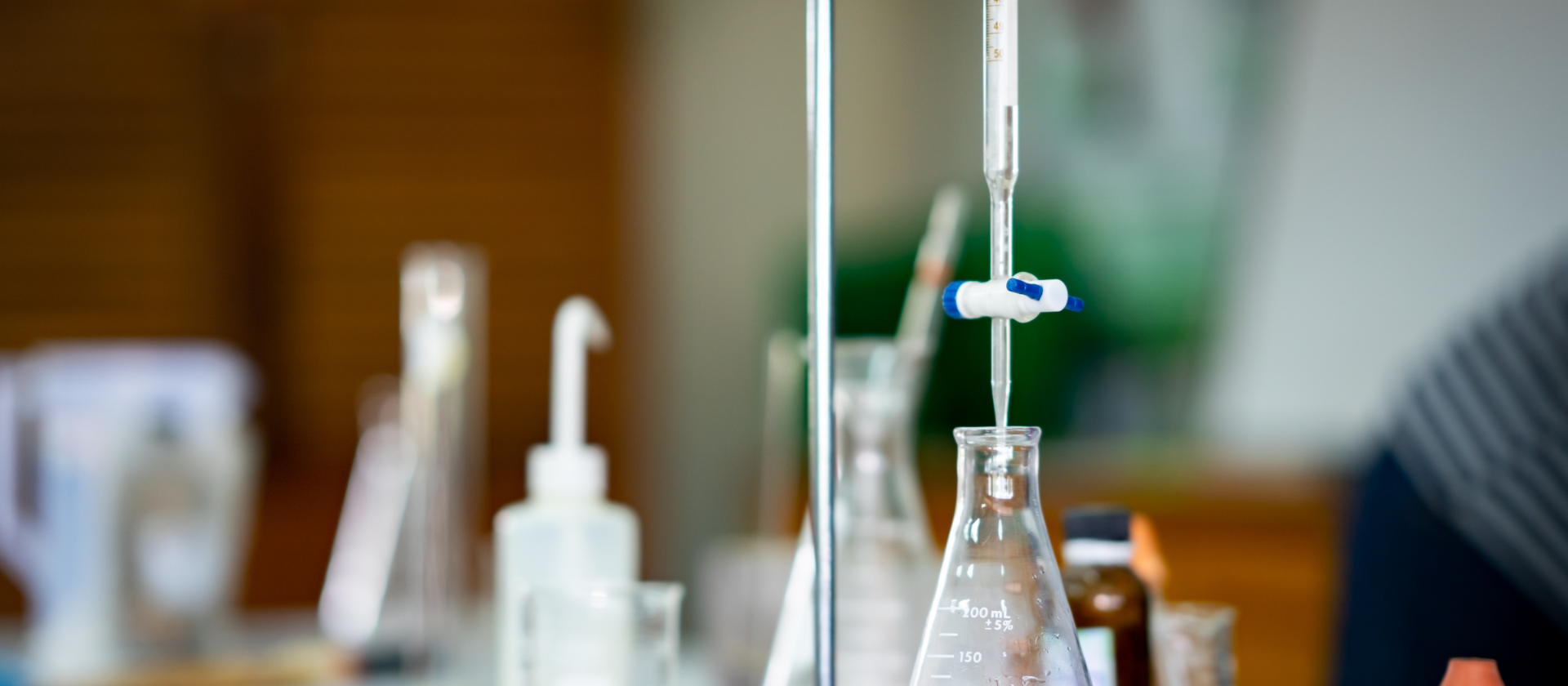Titration Basics: How to Use a Burette
Titration
The Manual Procedure & How to Properly Use a Burette
Titration is a Procedure in which a Solution – called the Titrant – whose Concentration is known very accurately is dispensed by a Burette and reacted with a known Volume of another Solution of Unknown Concentration – called the Analyte.
By measuring the amount of titrant needed to neutralize the analyte, you can determine the concentration of the analyte very accurately. The "end point" of a titration is the point at which the titration is complete, typically when an added indicator solution (such as phenolphthalein) changes color. The "equivalence point" is closely related to but not necessarily identical with the end point. The equivalence point is the point at which the number of moles (or equivalents) of titrant exactly equals the number of moles (or equivalents) of analyte. Ideally, the end point should exactly equal the equivalence point, but in the real world, they are slightly different.
For example, you may titrate a hydrochloric acid analyte with a sodium hydroxide titrant, using phenolphthalein as an indicator. Phenolphthalein is colorless in acid solutions, and pink in base solutions, but no color change occurs until the pH of the solution reaches about 8.2, well into the basic range.
Here is the Proper Way to Use a Burette:
1. Rinse the inside of a clean burette thoroughly with the solution it will contain. Allow the solution to run out through the stopcock. Drain the burette completely. Repeat the rinse at least once.
2. Make sure the outside of the burette is clean and dry, and then mount it securely to a laboratory ring stand using a burette clamp of the proper size.
3. Fill the burette to above the zero mark, using a graduated cylinder, small beaker, flask or other container. Use a funnel if necessary to prevent spillage.
4. Run some solution through the stopcock to fill the burette tip completely, making sure there are no air bubbles and that the level of the solution falls to or below the zero mark.
5. Record the starting volume. When you complete the titration, you will subtract the starting volume from the final volume to determine the amount of solution you have added. (Read the volume from the bottom of the meniscus).
Titration is a commonly used type of quantitative chemical analysis. By slowly introducing a known titrant into a known analyte of unknown concentration to an endpoint, a chemical reaction helps indicate how much of the analyte is present in the solution.
The "endpoint" of a titration is the point at which the titration is complete, typically when an added indicator solution, such as phenolphthalein, changes color. By measuring the amount of titrant needed to neutralize the analyte, you can accurately determine the analyte's concentration.

The "equivalence point" is closely related but not necessarily identical to the endpoint. The equivalence point is the point at which the number of moles (or equivalents) of the titrant exactly equals the number of moles of the analyte. Ideally, the endpoint should be exactly equal to the equivalence point, but in the real world, they are slightly different.
Types of Titration
There are four different types of titration. They include:
Acid-Base Titration
A pH scale is used to monitor the progress of this type of titration. In determining the concentration of an acid or base, the analyte is neutralized first and analyzed based on the acid dissociation constant or the base dissociation constant.
Redox Titration
Sometimes, this type of titration can require the use of a redox indicator or a potentiometer. This titration method determines concentration by causing a redox reaction between the analyte and the titrant.
Precipitation Titration
Concentration determination in this type of analysis involves the formation of a precipitate as a reaction between the analyte and the titrant. The test is over when the last of the pre-measured analyte is consumed by the reaction.
Complexometric Titration
This type of titration relies on a complex formed between the analyte and titrant. The complex has a different color, or an electrical charge, allowing the determination of the endpoint using an indicator of some kind. Some examples of this type include analysis for metal ions, amino acids, or complex organic molecules.
Titration and Burettes
Burettes make titration easier by allowing the titrant to be added to the analyte slowly over time, drip-by-drip. A burette is a common piece of laboratory equipment comprised of a glass or plastic tube with a stopcock at the dispensing end. The following suggestions highlight the best way to use a burette as part of a titration process:
1. Rinse the inside of a clean burette thoroughly with the solution it will contain. Allow the solution to run out through the stopcock. Drain the burette completely. Repeat the rinse at least once.
2. Make sure the outside of the burette is clean and dry, and then mount it securely to a laboratory ring stand using a burette clamp of the proper size.
3. Fill the burette to above the zero mark using a graduated cylinder, small beaker, flask, or another container. Use a funnel if necessary to prevent spillage.
4. Run some solution through the stopcock to fill the burette tip completely, ensuring there are no air bubbles and that the solution level falls to or below the zero mark.
5. Record the starting volume. When you complete the titration, you will subtract the starting volume from the final volume to determine the amount of solution you have added. Be sure to read the volume from the bottom of the meniscus.
Sources:
UN Academy, All About Complexometric Titration.unacademy.com.
By Jus, Types of Titration.byjus.com.
By Jus, Precipitation Titration.byjus.com.
By Jus, Redox Titration.byjus.com.
Wikipedia, Base Titration.en.wikipedia.org.











